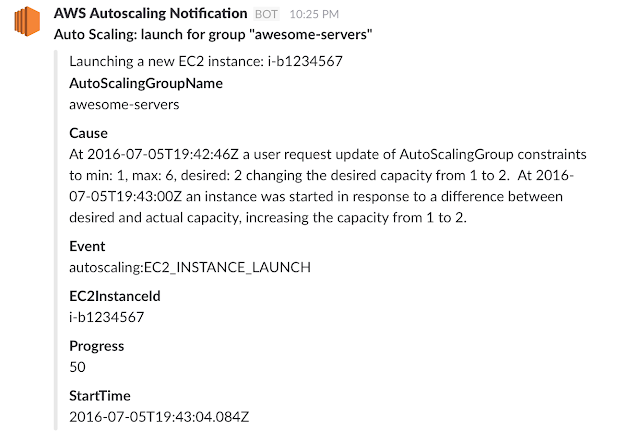I found some scripts that did roughly what I wanted, https://github.com/yoheimuta/hubot-aws, but those scripts 1) Did more than I wanted and 2) didn't have the formatting I wanted for the ls command and 3) didn't filter in the way I wanted. Based on yoheimuta's scripts I created a new npm package, hubot-ec2, that just lists instances.
Installation is straight forward in your hubot instance:
npm install --save hubot-ec2
npm install
npm install
After installing, set 3 environment variables
HUBOT_AWS_ACCESS_KEY_ID="ACCESS_KEY"
HUBOT_AWS_SECRET_ACCESS_KEY="SECRET_ACCESS_KEY"
HUBOT_AWS_REGION="us-east-1"
HUBOT_AWS_SECRET_ACCESS_KEY="SECRET_ACCESS_KEY"
HUBOT_AWS_REGION="us-east-1"
The keys used should be a user with the IAM Policy AmazonEC2ReadOnlyAccess.
Once thats all set, deploy your bot and you've got a new command, hubot ec2 ls. You can filter by instance name hubot ec2 ls i-abcd1234 or by tag name hubot ec2 ls production-*.
It will look something like this when its all wired up:

Do you use hubot and slack? What have you done to make it awesome?
Once thats all set, deploy your bot and you've got a new command, hubot ec2 ls. You can filter by instance name hubot ec2 ls i-abcd1234 or by tag name hubot ec2 ls production-*.
It will look something like this when its all wired up:

Do you use hubot and slack? What have you done to make it awesome?






